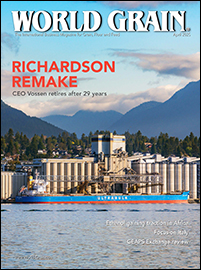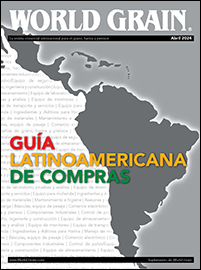As a long-time member of the Ohio State staff, Zulauf has enjoyed a successful career as reflected in the numerous awards he has received for his teaching and research in agricultural economics.
In addressing “long-term perspectives” for corn, soybeans and wheat, he sets the century between 1913 and 2014 as his base. He uses “real prices,” which are reflected in indexes based on 2014 averages of $3.65 per bushel for corn, $10.05 for soybeans and $6 for wheat. This results in 1913 “real prices” for the three at $15.76, $42.80 and $18.87. “The long-term decline reflects a simple story: Supply expands faster than demand,” Zulauf observes. Acknowledging that it is difficult to imagine this long-range weakness in view of what happened in the immediate past, he acknowledges the sharp price variations in periods of prosperity. Most striking, he notes, is the price steadiness between 1972 and 1980 as general price inflation offset declines. The power of the corn biofuel program stood out in the sharp price rise between 2005 and 2012. That period shows how exceptional strength stems from dual forces instead of single food demand. The latter, he says, “has not been enough to offset the supply increase.”
In his separate study of trends in grain demand in China and India, Zulauf does not relate these findings to the declining long-term trend in prices, although his demand forecast for these two nations is not bullish. He focuses on the importance of per capita income as a single influence on food demand, with that measure for China soaring recently and India also rising, but less so. His numbers graphically underscore this difference. Between 1980 and 2013, per capita calorie intake increased by 23% in India and by 44% in China. By 2013, per capita calorie intake in China was 26% higher than in India. Underscoring the inversion in income ratios between the two countries, he notes that in 1980 per capita income in China was 47% lower than in India, but by 2013, China’s per capita income was 118% above India’s. As if those trends are not impressive enough, Zulauf points to China’s relatively dramatic gains in animal protein consumption, which is credited to both income gains as well as dietary preferences in India that account for a large share of that country’s population eating vegetarian diets. He also compares consumption levels in the two countries to that of the 10 countries with the highest per capita incomes. In calories consumed per day, China has risen from 70% of the top 10 in 1980 to 91% in 2011, whereas India has risen from 65% to 72%.
While the annual rate of gain in per capita calorie intake has not started to slow in either nation, Zulauf points to a likely slowing in China’s food demand in the next decade. He acknowledges global food demand may continue to grow in “the next few years,” but anything approaching the last 20 years is unlikely. This bolsters his long-term projection: “The question is not if but when will corn crop year average prices be below $3 and pushing toward $2.”



